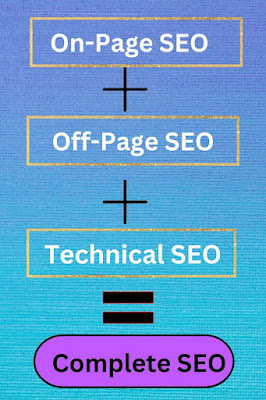All about SEO
SEO:
- Search engine optimization
SEO types:
1. On-page SEO – On-page SEO techniques are those that are carried out on your website to improve your search engine ranking. This can include things like optimizing
your title tags and meta descriptions, as well as marketing to make sure you are
website’s content is relevant to the keywords you’re targeting.
2. Off-page SEO –
This refers to optimizing a website for search engines by building links from other
websites. This can be done through things like guest posting, social media, and
directory listings.
3. Technical SEO – Technical SEO techniques are those that are carried out on the back end of your website to improve your search engine rankings.
SEO Techniques types:
1. White hat: Generally, White hat SEO refers to any practice that improves your search rankings on a search engine results page (SERP) while maintaining the integrity of your website and staying within the search engine’s terms of service.
2. Black hat: Black hat SEO is a practice against search engine guidelines used to get a site ranking higher in search results. These unethical tactics don’t solve for the searcher and often end in a penalty from search engines.
3. Gray hat: Gray hat SEO is the combination of SEO methods that go along with Google webmaster Guidelines (white hat SEO) and those that violate them (black hat methods).
4. Negative hat:
Negative SEO, also sometimes called ‘black hat SEO,’ involves the use of malicious tactics on your site to tarnish your reputation with Google and steal search engine rankings for important keywords to be used on a competitor’s site.
Keyword: Keywords and phrases in your web content that make it possible for people to find your site via search engines.
1. Keyword Density:
Keyword density refers to the number of times a Keyword appears on a given
webpage or within a piece of content as a ratio or percentage of the overall
word count. This is also sometimes referred to as Keyword frequency, or the
frequency with which a specific keyword appears on a webpage.
2. Keyword Frequency:
Keyword
frequency refers to how often a keyword appears on a given web page. The more
frequently a keyword appears on a page or piece of content, the higher your
keyword frequency is. Keyword frequency will help determine how well people can
find your website or content organically.
3. Keyword Prominence:
Keyword
prominence is an SEO best practice that involves using a page’s target keyword
early to send a strong signal to Google about what the page should
rank for. It’s a concept comparable to rank for. It’s a concept comparable to the
journalistic standard of never burying the lead.
4. Keyword Proximity:
The
keyword proximity refers to the distance between the search term’s individual
keywords.
Keyword stuffing- Keyword stuffing is when someone attempts to manipulate their position in the search results by concentrating on relevant keywords. Search engines can tell when keywords are abnormally distributed throughout the text or in a website's meta tags.



.jpeg)

%20Without%20Internet%20%E2%80%94%20New%20Minimalism%20(1).png)
Comments
Post a Comment